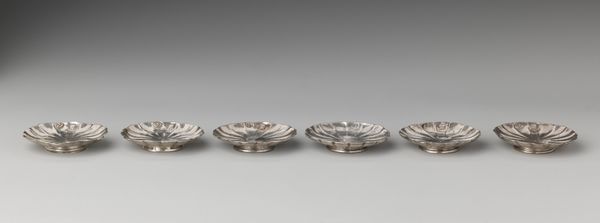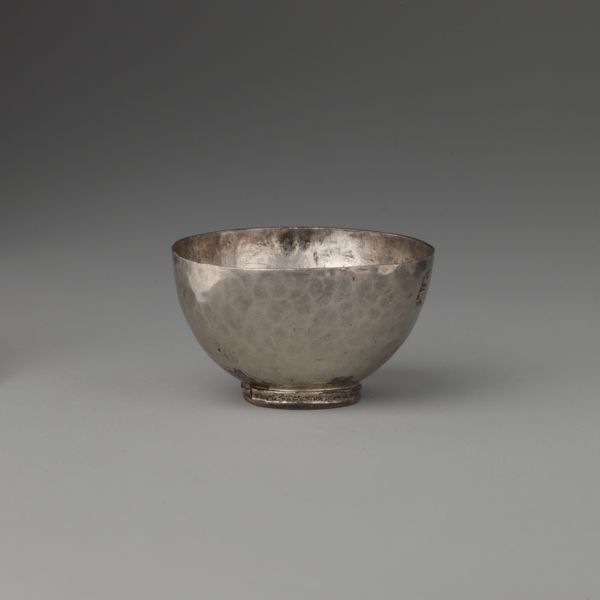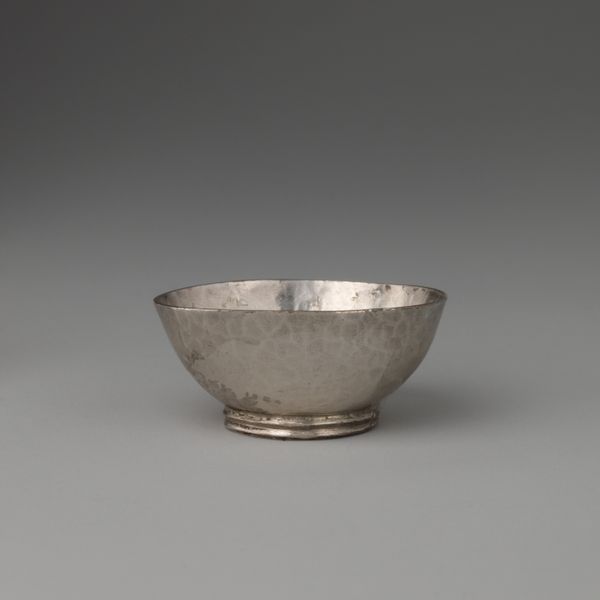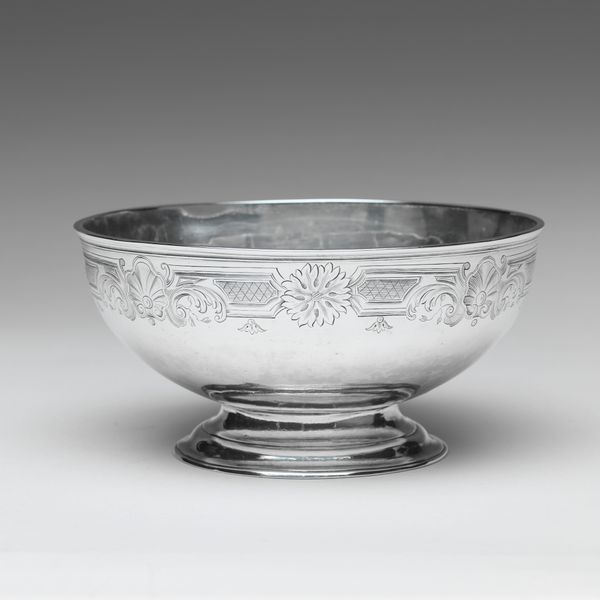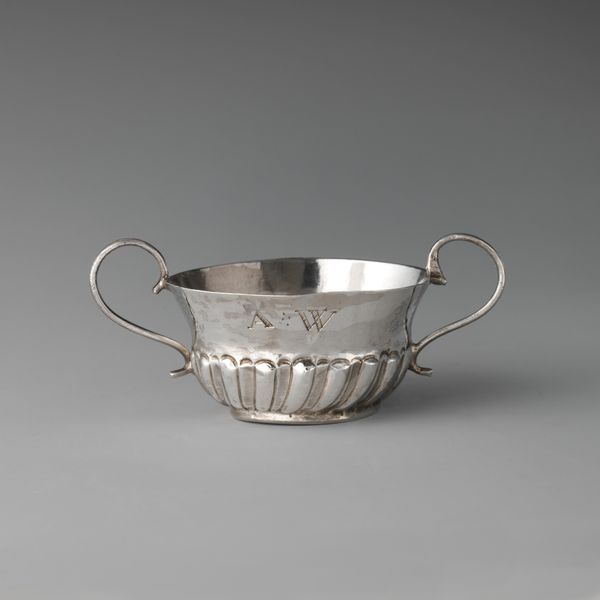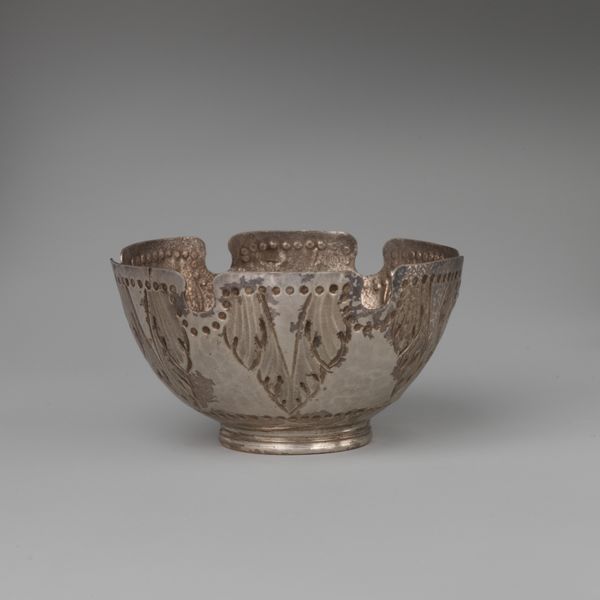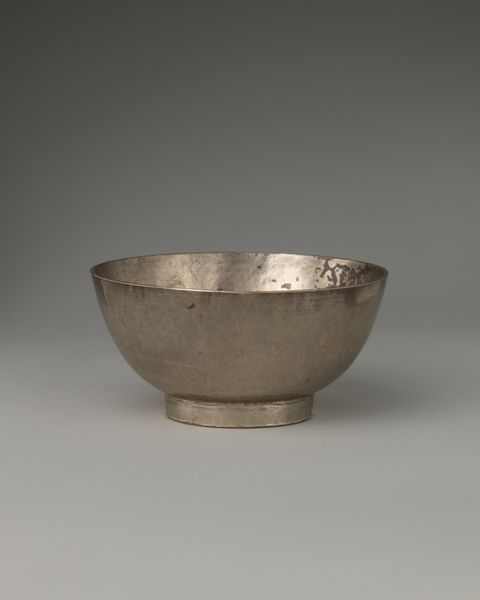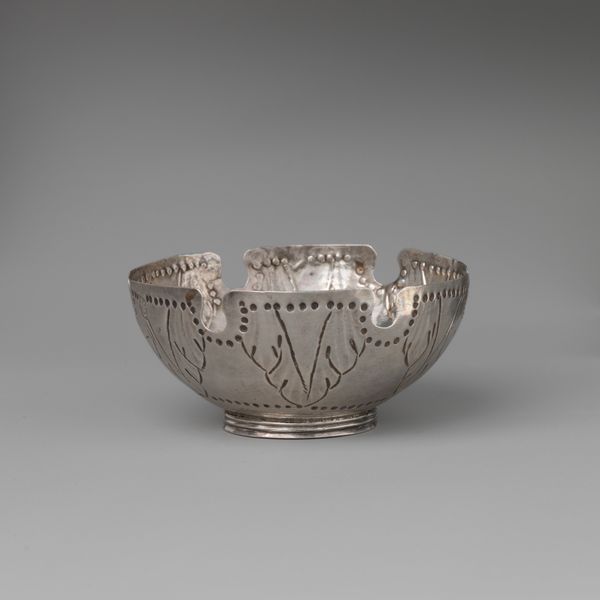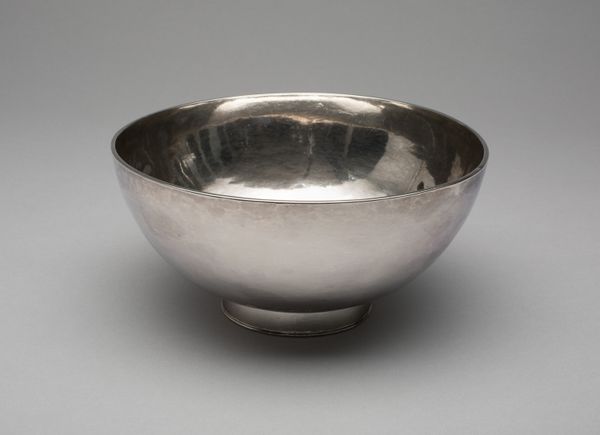
silver, sculpture
#
silver
#
baroque
#
sculpture
#
decorative-art
Dimensions: Diameter (each): 1 5/16 in. (3.3 cm)
Copyright: Public Domain
Editor: We’re looking at "Six Miniature Cups" made of silver between 1685 and 1715. They’re part of a set at the Metropolitan Museum. They’re so small and delicate. I am curious, what story do you think they tell? Curator: Considering the baroque style, it’s fascinating to delve into the material processes at play. Think about the labor involved in extracting, refining, and shaping this silver. The very act of transforming raw ore into these refined objects reveals a great deal about social and economic structures of the time. What does their size say about consumption? Editor: That's interesting. I hadn't considered the mining and production. They do seem almost too precious. I guess only the elite would have used them. What was their role? Were they display items? Curator: More likely for specialized use, perhaps part of a condiment set, or for holding spices at a lavish banquet. It begs the question: Who crafted them? And what were their working conditions? By investigating the production of these cups, we move beyond merely appreciating their aesthetic qualities. We think about social power in the labor of art. Editor: So, examining the object itself can reveal historical conditions? Curator: Precisely. The maker's mark, if present, can reveal workshops, trade networks and more. But even without it, the material speaks. Silver was a commodity traded across continents, so the cups themselves are small, but they represent this network of power, global trade, and specialized skills. Editor: That's a whole new way to see something I considered just pretty. Thanks for sharing this deeper perspective. I appreciate that. Curator: My pleasure. Examining the object itself tells a much larger story about how art production can be linked to our material culture.
Comments
No comments
Be the first to comment and join the conversation on the ultimate creative platform.

